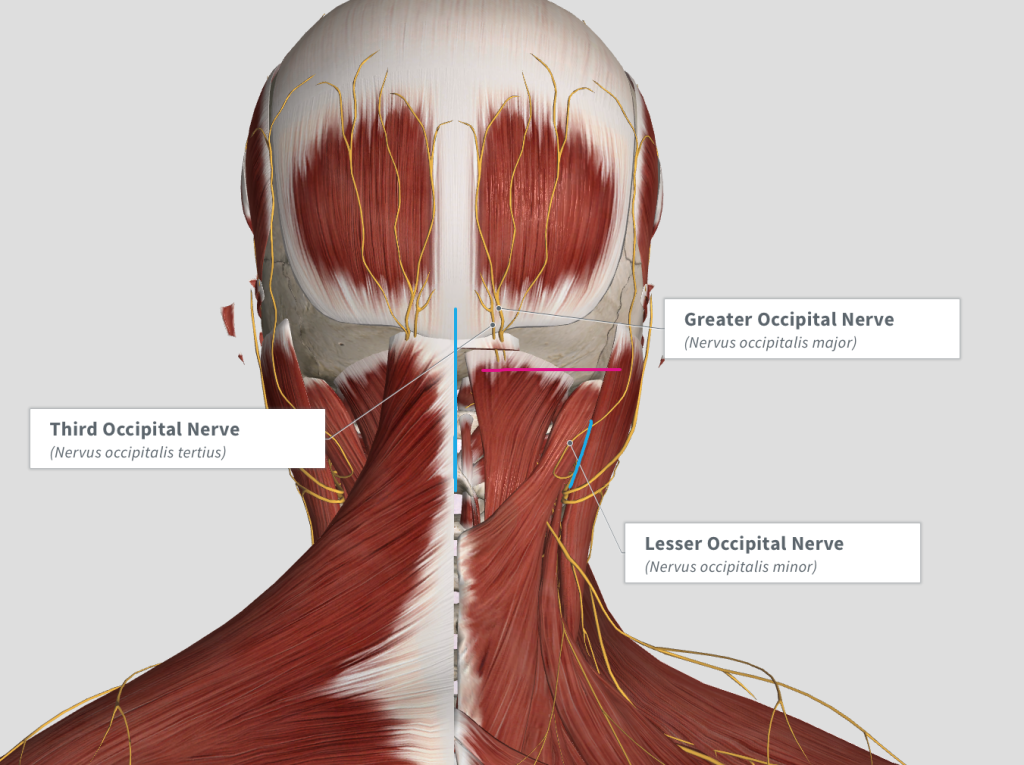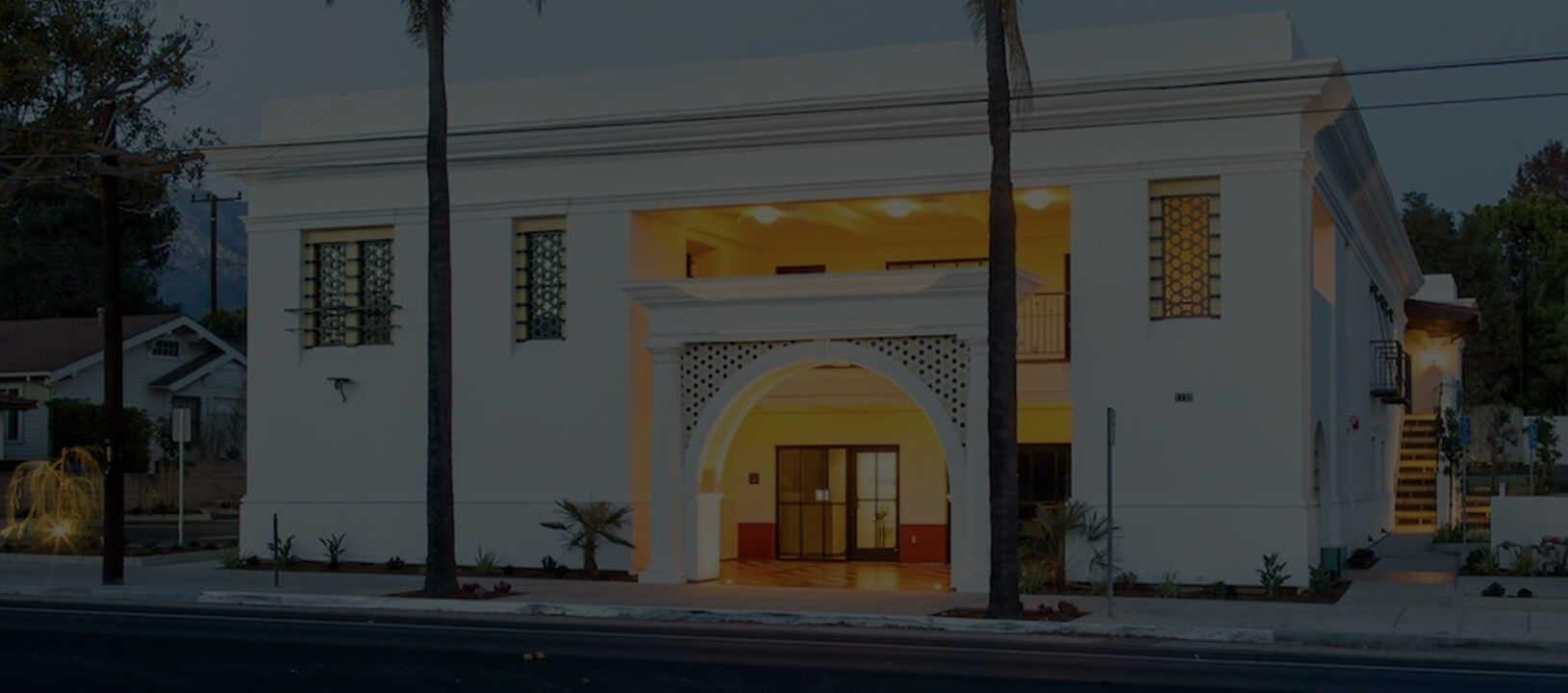In the course of my aesthetic plastic surgery practice, many patients are of course interested and concerned about where the incisions will be placed for their surgery. With migraine headache and neuralgia patients, however, there is more interest surrounding pain relief than incision sites. That said, I have seen several revisions of migraine surgery necessary from surgeons who use a different incision pattern than I do, and I think it important for a headache surgery patient to understand why we make the incisions where we do, and how our revisions may be successful following previous “unsuccessful” nerve release surgery. For this discussion, we need to examine the diagram below…..

In this diagram, you can find some of the tissue layers that we are dealing with when releasing the occipital nerves, as well as the nerve courses and positions. You can also see a single red horizontal line and 2 more vertical blue lines.
GENERALLY SPEAKING, the nerves are addressed in the region that the label points to. At these spots, compressed nerves are released while excessively diseased nerves may be divided in order to alleviate pain. The nerve is best addressed in either of these manners, with decompression or division. before it has divided into smaller branches. Compressive muscles are most often problematic where there is a single nerve trunk rather than out near the skin where there are many branches. If we need to divide the nerve, we want to do so BEFORE there are several branches- any remaining undivided branch can still send a signal to the brain causing pain.
So the colored lines you see represent incisions. The incision that I have seen requiring revision is the horizontal one in red. Through this incision, there is great access to the trunks of the greater and third occipital nerve. Access to the lesser occipital nerve from this incision, however, can be difficult. You can see how it might be difficult tracking all the way down the neck from this incision, to make sure that the nerve that is addressed is the TRUNK of the lesser occipital nerve rather than one of its branches.
In my training with Dr. Ziv Peled, he taught me his technique of using incisions generally in the areas of the BLUE lines. Like him, I make a single vertical midline incision that allows me easy access to a long segment of the greater and the third occipital nerves, and excellent access to all of the muscle and connective tissue bands that may be compressing the nerve along its course. The other great thing about this approach is that this single incision allows me to access the nerves on EITHER OR BOTH sides of the neck, whereas the horizontal incision denoted in red must be repeated on each side that requires decompression. In our approach, the lesser occipital nerve is addressed through a separate, small incision right where the trunk of this nerve emerges from the muscle, and where the compression is most usually found. This allows for direct access to the problem and a much less likelihood that the main trunk is missed and only the more distal branches are addressed. Consistent with the remainder of my aesthetic practice, meticulous closure and handling of tissues most often result in an aesthetic and well-healed scar.
So what is the take-home messages here? While many patients find effective relief in operations performed by surgeons using a horizontal scar, if you still have pain following such an operation, you can and should explore the possibility that an operative revision using different incisions may allow for better access to the nerves in question. If you are discussing your operation with your surgeon, make sure that they have good reasons for making the incisions that they do, and allow them to explain in detail their approach to your operation so both they and you are comfortable with your plan.
To read more about headache anatomy click here
To read more about the branching of nerves click here
If you have questions or to see if you are a candidate for revision of your headache/occipital neuralgia surgery, please call us at 805-969-9004. Dr. Lowenstein evaluates migraine and occipital neuralgia patients from the local Bakersfield, Santa Barbara, and Los Angeles area as well as from other parts of the country and around the world. We will be happy to set up an appointment or set aside time for a Skype consultation to discuss your headache surgery.

